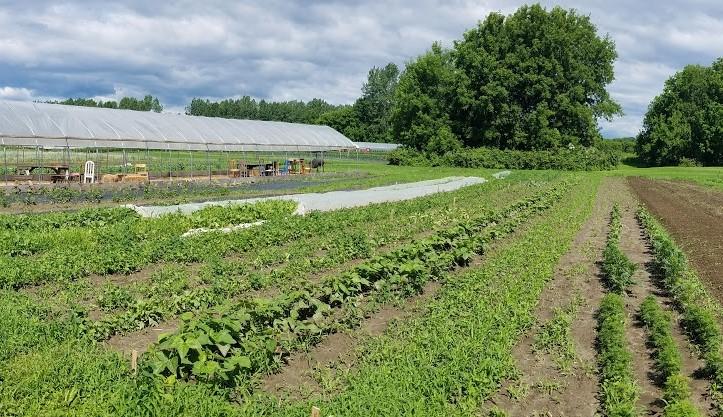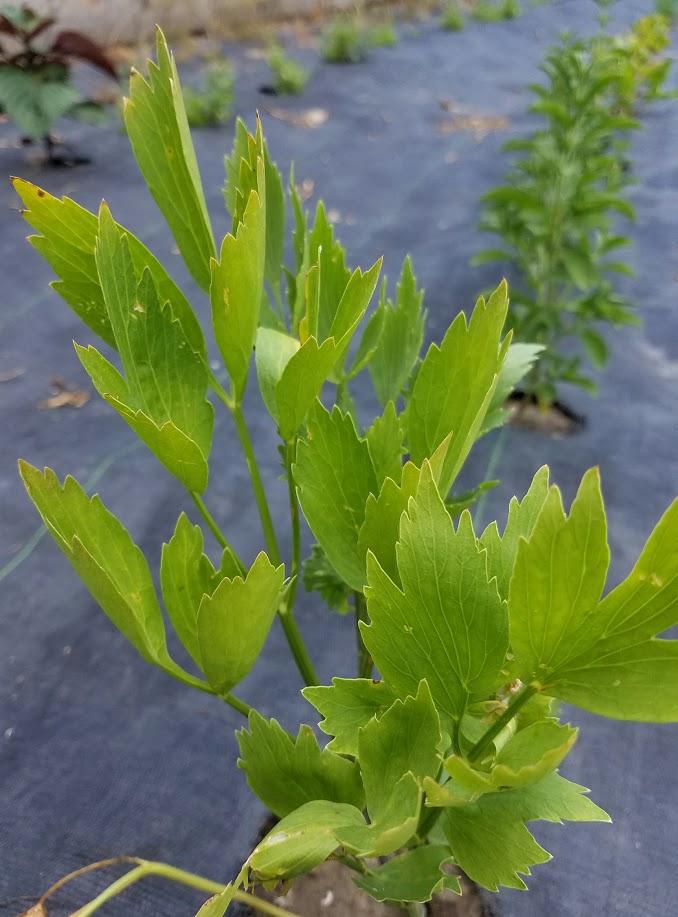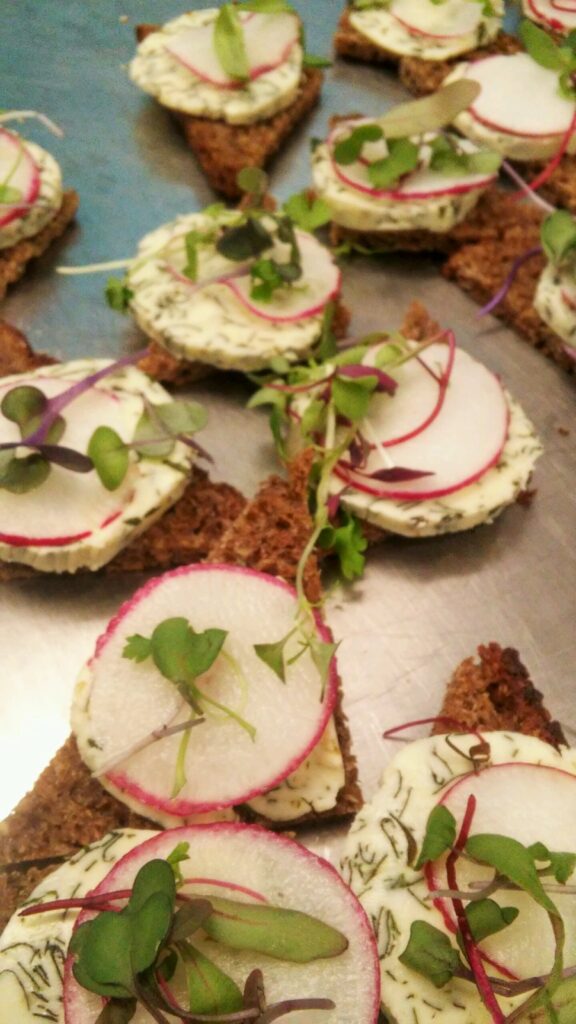Chives, oregano, lavender – herbs cover row after row of our fields at the Intervale. Our farm manager, Matt, grows a wide variety of common and specialty herbs for the kitchen to ensure that our dishes are teeming with flavor and personality. We’re cultivating the classics – thyme, sage, rosemary, mint, and cilantro, as well as five varieties of basil! You’ll also find an array of unique species, including lemon verbena, shiso, marjoram, and salad burnet.

As Matthew and I transplanted many of these herbs into their respective beds, he spoke of the particular flavor each plant holds before we promptly plopped a leaf or two into our mouths. The simple green leaf of orange spice thyme surprised me with its burst of citrus. The bright purple flowers of the chives left my breath smelling of onions for hours after. Yet, of all the herbs we sampled, two stood out to me above all the rest – anise hyssop and lovage.
I’ve never been a fan of licorice, but anise hyssop holds the flavor in a way that is gentle, subtle, and endearing. You wouldn’t expect such a simple plant to taste so sweet – but it won’t seem ordinary for long. Come August, the stocks will be topped with lavender/blue flowers beloved by hummingbirds, butterflies, and bees alike!
Anise hyssop – Agastache foeniculum – is a native wildflower of North-Central North America, and belongs to the mint family, Lamiaceae. As an herbaceous perennial, it can reach from two to four feet in height and one foot across! Anise hyssop can be found in the cabinets of both chefs and herbalists – as in addition to its lovely flavor, it can be used as treatment for colds and fever. In the kitchen, its fresh leaves will be tossed with salads and concocted into jellies. Dried, the foliage creates a delectable tea. The tangy flowers compliment a variety of fruit salads, while the seeds are well-suited to dress cookies or muffins. In our own kitchen at Sugarsnap, we make simple syrups using anise hyssop to sweeten our ice teas! To learn how to make an herb-infused simple syrup, check out our farm processor, Lauren’s, blog post from this winter linked below!

Quite unlike anise hyssop, lovage embodies celery-like tones. Its small, pale yellow flowers rest in compound umbels, while its glossy, dark green leaves increase in size from top to bottom. Lovage, Levisticum officinale, is a member of the Apiaceae, or parsley, family, and is well known in the herbalist community as a diuretic. In the kitchen all parts of the plant can be used! Salads adorned with fresh stems; soups enhanced with dried leaves; or dressings, spreads, and brines flavored with ground seeds – its versatility allows lovage to find its way into a variety of dishes.

Here at Sugarsnap, lovage garnishes one of our popular appetizers! Triangular cuts of rye toast decorated with sweet butter and radishes from our farm – lovage ties it all together with its essence of fresh air and imminent rain. Try this recipe at home, or book our services for your next event!
Natalie, Content Marketing Intern
